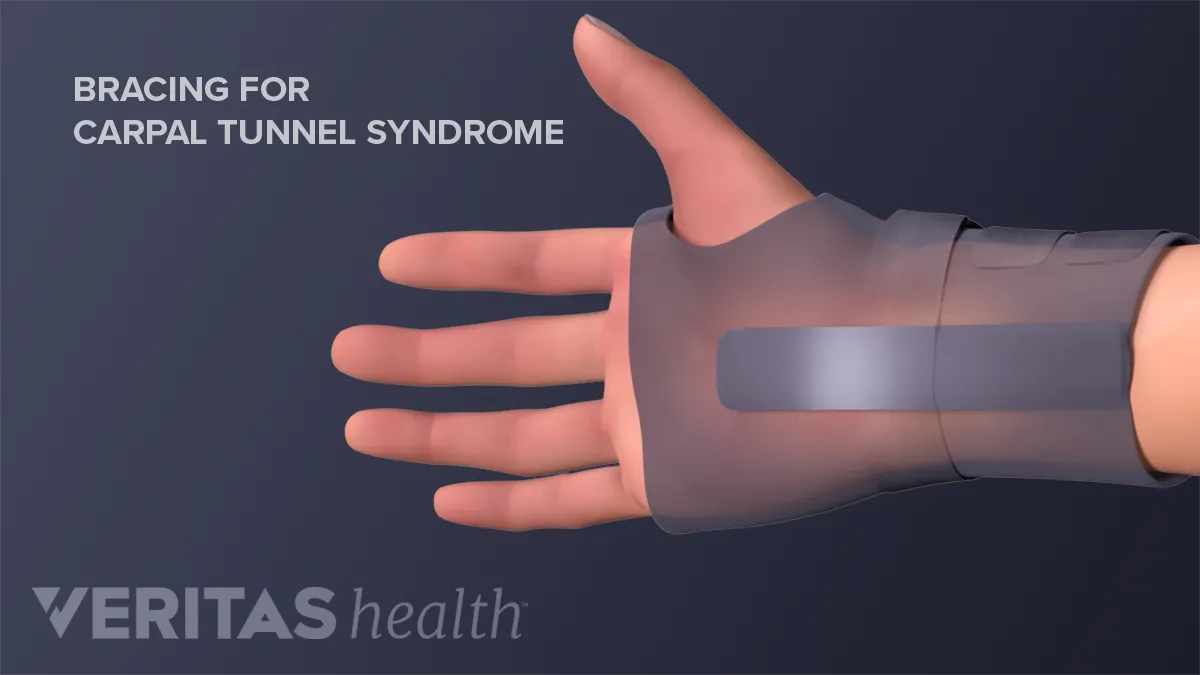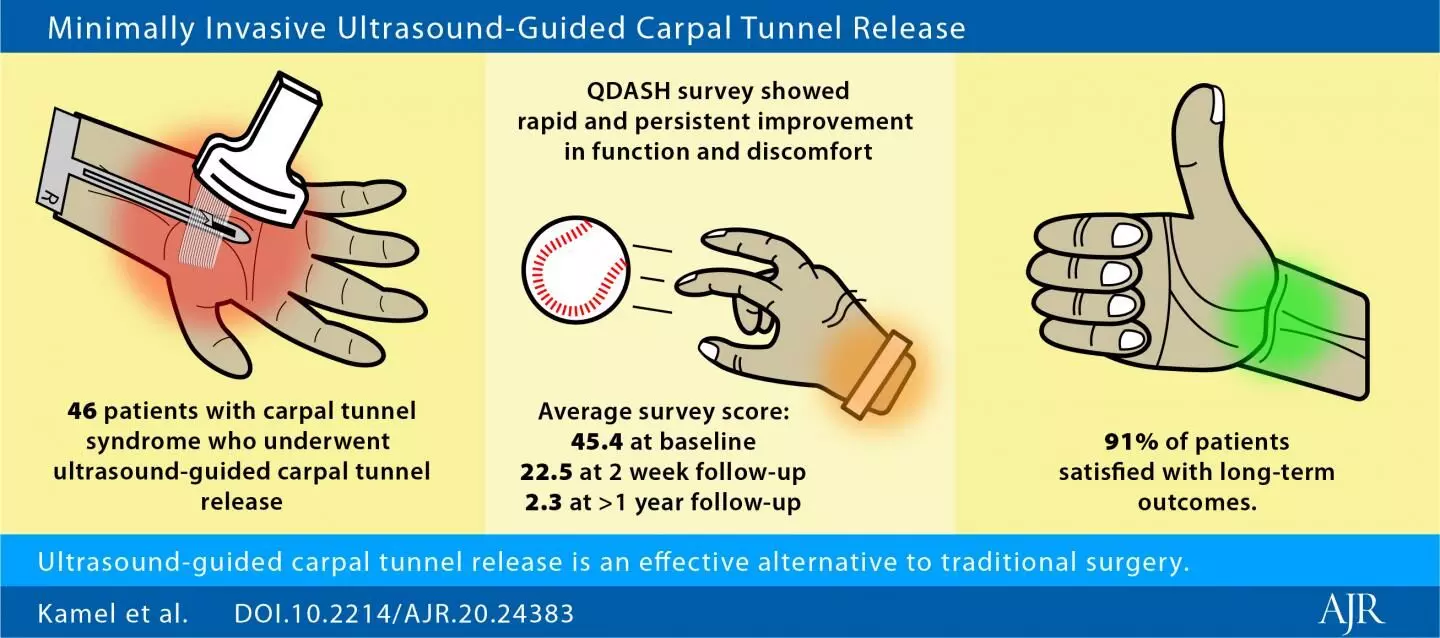Are you tired of dealing with the pain and discomfort of Carpal Tunnel Syndrome? Look no further! In this article, we will explore a range of effective treatment options that can provide you with much-needed relief. From non-surgical methods such as wrist splints and physical therapy to minimally invasive procedures like corticosteroid injections, we’ve got you covered. Say goodbye to the numbness and tingling in your hands and regain control of your life with these proven solutions.

Splinting and Bracing
Splinting and bracing are commonly used treatment options for individuals with carpal tunnel syndrome. Wrist splints, in particular, are highly effective in providing support and immobilization to the wrist joint. These splints are typically made of a rigid material and are designed to keep your wrist in a neutral position, preventing excessive flexion or extension.
Another type of splint commonly used for carpal tunnel syndrome is the cock-up splint. This splint allows for some movement of the fingers while still providing support to the wrist. It keeps your wrist slightly extended, relieving pressure on the median nerve.
In addition to daytime use, wearing a splint at night can also be beneficial. Nighttime splinting helps to alleviate symptoms by keeping your wrist in a neutral position while you sleep, reducing the likelihood of waking up with numbness and tingling in your hand and fingers.
For individuals with severe carpal tunnel syndrome or those who have not found relief with other conservative treatments, custom orthotics may be recommended. These orthotics are specifically designed to fit your hand and wrist and provide optimal support and immobilization.
Medications
Medications can be used as part of the treatment plan for carpal tunnel syndrome to help manage pain and inflammation. Nonsteroidal anti-inflammatory drugs (NSAIDs) are commonly prescribed to reduce inflammation in the carpal tunnel and alleviate pain associated with the condition.
Oral corticosteroids, such as prednisone, may also be prescribed. These medications help to reduce inflammation and suppress the immune system’s response, potentially providing relief from carpal tunnel symptoms. However, long-term use of oral corticosteroids is generally not recommended due to the risk of side effects.
Topical corticosteroids, in the form of creams or gels, can be applied directly to the affected area to help reduce inflammation and relieve pain. These medications are typically applied a few times a day and can provide localized relief.
In some cases, a corticosteroid injection may be administered directly into the carpal tunnel. This treatment option can provide immediate relief of symptoms, such as pain and numbness, by reducing inflammation and swelling. However, the effects of a steroid injection are usually temporary and may need to be repeated periodically.

Physical Therapy
Physical therapy plays a crucial role in the treatment of carpal tunnel syndrome. A qualified physical therapist can provide you with a personalized treatment plan to target your specific symptoms and improve overall wrist function.
Stretching exercises are commonly prescribed to help improve flexibility and decrease tension in the muscles and tendons surrounding the carpal tunnel. These exercises typically involve gently stretching the fingers, hand, and wrist in various directions to alleviate pressure on the median nerve.
Strengthening exercises aim to improve the strength and endurance of the muscles in the hand and forearm. By strengthening these muscles, they can better support the wrist and alleviate the strain on the carpal tunnel.
Nerve gliding exercises involve moving the median nerve through its full range of motion, helping to reduce nerve irritation and improve overall nerve function. These exercises are typically performed with the guidance of a physical therapist to ensure proper technique and maximize effectiveness.
In addition to exercise, manual therapy techniques, such as massage and mobilization, may be used to address muscle tightness, joint stiffness, and nerve irritation. These techniques can help improve circulation, reduce inflammation, and restore normal tissue function.
Ergonomic Modifications
Making ergonomic modifications to your workstation setup is essential for individuals with carpal tunnel syndrome, as it can help alleviate symptoms and prevent further aggravation of the condition. Here are a few key adjustments you can make:
-
Adjust your workstation setup: Ensure that your desk, chair, and computer are all positioned ergonomically. This includes adjusting the height of your chair and desk, positioning your monitor at eye level, and using a keyboard and mouse that promote neutral wrist positioning.
-
Use ergonomic devices: Consider using ergonomic tools, such as an ergonomic keyboard, mouse, or wrist pad, to minimize strain on the wrist and promote proper hand and wrist alignment.
-
Take breaks and stretch: It is important to take regular breaks throughout the day to rest your hands and wrists. During these breaks, perform stretching exercises specifically targeting the muscles and tendons affected by carpal tunnel syndrome.
-
Maintain proper posture: Maintaining good posture is crucial for preventing excessive strain on the wrists and hands. Sit up straight, keep your shoulders relaxed, and avoid slouching or hunching over your desk.

Activity Modification
Making certain modifications to your daily activities can help reduce the strain on your wrists and prevent further aggravation of carpal tunnel syndrome. Here are some helpful tips:
-
Avoid repetitive movements: Minimize or modify activities that require repetitive motions of the hands and wrists, such as typing or using vibrating tools. If possible, try to alternate tasks or take frequent breaks to allow your wrists to rest.
-
Limit forceful gripping: Avoid excessive force or pressure when gripping objects. Instead, try to use a lighter grip or utilize tools that can help distribute the force more evenly.
-
Use proper techniques: When performing tasks that involve the use of your hands and wrists, make sure to use proper body mechanics and techniques. This can help reduce strain on the wrist and prevent further damage.
-
Switch hands for tasks: If possible, try to switch hands for tasks that involve repetitive movements or forceful gripping. This can help distribute the load between both hands and reduce the strain on the affected wrist.
Alternative Therapies
In addition to conventional treatments, some individuals with carpal tunnel syndrome find relief through alternative therapies. These therapies focus on holistic approaches to pain management and overall well-being. Here are a few alternative therapies that may be beneficial:
-
Acupuncture: Acupuncture involves the use of small, thin needles that are inserted into specific points on the body to stimulate energy flow and promote healing. Some individuals find that acupuncture can help reduce pain and improve symptoms associated with carpal tunnel syndrome.
-
Chiropractic care: Chiropractors can help alleviate symptoms of carpal tunnel syndrome by manipulating the bones and joints in the wrist and hand. These adjustments aim to reduce nerve irritation and improve overall functioning.
-
Massage therapy: Massage therapy can help relieve muscle tension, promote circulation, and reduce pain associated with carpal tunnel syndrome. Different massage techniques, such as deep tissue massage or myofascial release, may be used to target specific areas of tightness and discomfort.
-
Yoga and tai chi: These mind-body practices focus on gentle stretching, strengthening, and relaxation techniques. By incorporating yoga or tai chi into your routine, you can improve flexibility, reduce muscle tension, and promote overall well-being.

Transcutaneous Electrical Nerve Stimulation (TENS)
Transcutaneous Electrical Nerve Stimulation (TENS) is a non-invasive pain management technique that involves the use of mild electrical currents to stimulate the nerves and block pain signals. TENS can be particularly helpful for individuals with carpal tunnel syndrome. There are different types of TENS:
-
High-frequency TENS: High-frequency TENS delivers electrical impulses at a rapid frequency, targeting the sensory nerves to produce a tingling or buzzing sensation. This stimulation helps to block pain signals and reduce discomfort.
-
Low-frequency TENS: Low-frequency TENS delivers electrical impulses at a slower rate, targeting the motor nerves to produce muscle contractions. This can help to improve blood flow, reduce inflammation, and promote healing.
-
Combination therapy: Combination therapy involves using both high-frequency and low-frequency TENS simultaneously. This approach can be particularly effective in providing pain relief and promoting overall recovery.
-
Portable TENS devices: Portable TENS devices are small, battery-operated devices that can be worn or carried throughout the day. These devices allow individuals to self-administer TENS therapy as needed, providing pain relief on-the-go.
Ultrasound Therapy
Ultrasound therapy is a therapeutic technique that uses high-frequency sound waves to transmit heat or vibration deep into the tissues. This therapy can be beneficial for individuals with carpal tunnel syndrome. Here are some types of ultrasound therapy:
-
Thermal ultrasound: Thermal ultrasound involves the use of sound waves that generate heat within the tissues. This heat can help increase blood flow, relax muscles, and reduce pain and inflammation.
-
Non-thermal ultrasound: Non-thermal ultrasound uses sound waves that do not generate heat but instead produce a gentle vibration within the tissues. This vibration can help improve circulation and promote tissue healing.
-
Phonophoresis: Phonophoresis is a technique that combines ultrasound therapy with the application of certain medications. The ultrasound waves help to enhance the penetration of the medication into the tissues, providing localized relief.
-
Ultrasound-guided injection: In some cases, ultrasound therapy may be used to guide the precise placement of therapeutic injections into the affected area. This can help ensure accurate delivery of medications and improve treatment outcomes.

Surgical Interventions
In more severe cases of carpal tunnel syndrome, surgical intervention may be necessary to alleviate symptoms and restore normal hand and wrist function. Here are some surgical options:
-
Carpal tunnel release: Carpal tunnel release is a surgical procedure that involves cutting the ligament that forms the roof of the carpal tunnel. This release relieves pressure on the median nerve and provides long-term relief from symptoms.
-
Endoscopic carpal tunnel release: Endoscopic carpal tunnel release is a minimally invasive surgery that involves using a thin tube with a camera to visualize and cut the ligament without making a large incision. This technique typically results in less post-operative pain and a quicker recovery time.
-
Mini-open carpal tunnel release: Mini-open carpal tunnel release is a variation of traditional open surgery that involves making a smaller incision. This technique allows for direct visualization of the carpal tunnel and precise release of the ligament.
-
Percutaneous carpal tunnel release: Percutaneous carpal tunnel release is a minimally invasive procedure that involves using a specialized needle-like device to cut the ligament. This technique usually requires local anesthesia and has a shorter recovery time compared to traditional surgery.
Lifestyle Changes
In addition to the various treatment options available, making certain lifestyle changes can help manage and prevent carpal tunnel syndrome. Here are some lifestyle modifications that can be beneficial:
-
Maintaining a healthy weight: Excess weight can put additional strain on the wrists and contribute to carpal tunnel syndrome. Maintaining a healthy weight can reduce this strain and decrease the risk of developing or worsening the condition.
-
Exercising regularly: Engaging in regular physical activity can improve overall strength, flexibility, and circulation. Strengthening the muscles in your forearms, hands, and fingers through exercises such as wrist curls and finger stretches can help support the wrist joint and alleviate symptoms.
-
Taking breaks from repetitive activities: If you perform repetitive tasks regularly, it is important to take breaks to rest your hands and wrists. Use this time to perform stretching exercises for the wrists and fingers, and allow your muscles and tendons to recover.
-
Avoiding excessive wrist flexion: Be mindful of your wrist position during daily activities. Avoid excessive flexion or extension of the wrist, as these positions can contribute to the compression of the median nerve. Instead, strive for a neutral wrist position whenever possible.
By implementing these lifestyle changes, you can reduce the strain on your wrists and promote overall wrist health, helping to manage and prevent carpal tunnel syndrome.